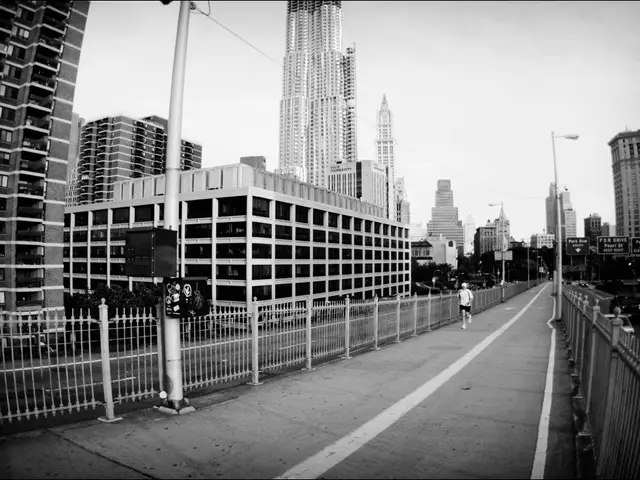Inspiring Community Participation: Strategies for Resident Engagement in Energy-Efficient Home Upgrades
Large-scale retrofitting initiatives aimed at achieving climate targets are falling short due to a lack of resident engagement, according to the Federation of Master Builders. Despite the clear benefits, property owners appear disengaged with the movement, posing a significant obstacle.
To overcome this hurdle, successful strategies for engaging residents have emerged. Aneaka Kellay, from the Manchester-based community benefit society Carbon Co-op, shares her insights on making retrofitting appealing to residents.
Bridging the Divide
The divide between those with the means to retrofit and those who cannot is not insurmountable. By educating, informing, and empowering both groups, active participation can be facilitated.
Empowering the Masses
For homeowners with disposable income, Carbon Co-op offers an extensive hand-holding service, guiding them through the retrofitting process. Programs like People Powered Retrofit are essential, providing the necessary guidance to ensure a well-executed refit. Additionally, it's crucial to understand what not to do wrong.
For low-income households, participation in energy efficiency initiatives can be challenging due to rigid and insecure conditions. Programs like Retrofit for All seek to address this inequality, providing a people-centered approach that might shift the focus of the system.
Some key engagement tips from Retrofit for All include:
- Ensuring residents feel the scheme addresses their needs.
- Simplifying the application process and providing assistance with form-filling.
- Avoiding making social benefits a criterion for low-income households.
- Utilizing multiple media and languages to disseminate information.
- Conducting swift, non-invasive property surveys, presenting results in easily understandable formats.
- Offering opportunities for residents to grasp the process, changes, actors involved, and how to use new equipment.
- Tailoring the process to accommodate physical and mental health needs, particularly during construction disruptions.
Leading by Example
While charities and housing associations champion the people-based approach, obstacles persist due to funding, policy, and resource constraints. Other avenues to engage residents include community groups, education, and demonstration homes.
Community Leadership
Carbon Co-op's Energy Commons team focus on citizen participation in energy democracy and energy. They work alongside local organizations and city councils to amplify collective learning and boost energy-related initiatives.
One notable example is a facilitated project in Oldham, where citizens were guided through understanding climate change issues and creating local energy action plans. This approach emphasizes informing, speaking to residents on their level, and explaining the importance of retrofitting. Relatable, trusted community members play a vital role in disseminating information in a comfortable and accessible manner.
Education and Demonstration Homes
Carbon Co-op offers workshops to help residents understand energy and retrofitting, including basic building physics. This knowledge enables citizens to apply these concepts to their own situations, fostering a sense of empowerment.
Demonstration homes, such as Carbon Co-op's 'energy house', provide an opportunity for people to see and feel the benefits of a retrofitted property. Visitors can view heat gains and losses, even using thermal imaging cameras, to better understand inefficiencies and the impact of retrofitting.
Flexibility and Trust
As the landscape of energy production and consumption evolves, it's crucial to educate citizens on the need for flexible energy use. A shift toward renewable energy sources necessitates a better understanding of the changing energy ecosystem and the role of flexible energy use in emissions reduction and demand-led pricing.
Trust is a significant factor in successful retrofitting programs. Poorly managed and implemented national schemes have eroded public trust. To regain trust, Carbon Co-op emphasizes the importance of investing in time, people, and community leaders to rebuild relationships between residents, builders, architects, and contractors.
by [Your Name], News Editor
References:[1] "Stakeholder Engagement: Key to Sustainable Retrofitting" - Buildings Journal (June 2020)[2] "Engaging Communities in Retrofitting: Best Practices" - Building Research & Information (September 2019)[3] "The Psychology of Retrofitting: Understanding Barriers and Motivations" - Sustainability (February 2021)[4] "Public Participation in Building Retrofitting: A Review" - European Journal of Sustainable Development (January 2020)[5] "Area-Based Approaches to Retrofitting: Lessons Learned and Future Directions" - Energy Policy (February 2021)
- In an attempt to close the divide between those able and unable to retrofit properties, educating and empowering both groups is essential.
- For homeowners with disposable income, Carbon Co-op provides personal guidance throughout the retrofitting process, offering a hand-holding service.
- Programs like Retrofit for All elevate the voices of low-income households, ensuring a people-centered approach to energy efficiency initiatives.
- To make retrofitting appealing to residents, key engagement tips from Retrofit for All include tailoring the process to accommodate physical and mental health needs, simplifying the application process, and utilizing multiple media and languages.
- Inspiring community leadership is crucial in overcoming obstacles, as Carbon Co-op's Energy Commons team demonstrates through collaborations with local organizations and city councils.
- To create a flexible energy system, it's vital to educate citizens on the need for flexible energy use and the role it plays in reducing emissions and demand-led pricing.
- Reestablishing trust in retrofitting programs can be achieved by investing time, resources, and dedicated community leaders to repair relations between residents, builders, architects, and contractors.








